

Ask any DevOps engineer about their biggest headache, and you'll likely hear about the endless cycle of manual configurations, inconsistent deployments, and firefighting unexpected infrastructure failures. Managing complex infrastructures while ensuring reliability and scalability often demands significant resources and time. However, modern infra tools like Kubernetes, Terraform, and Prometheus are changing the game in how businesses automate and optimize their IT environments.
This article will take you through some of the most powerful infrastructure automation tools available today and show you how they can eliminate inefficiencies, reduce errors, and supercharge your workflows.
Setting up manual infrastructure might be slow, error-prone, and inefficiently scalable. Businesses need infra tools that guarantee consistency, minimize downtime, and streamline operations. The right tools speed up deployments, reduce human error, and help teams manage resources effortlessly across cloud and on-premise environments.
Below, we’ll explore two leading infra tools for infrastructure provisioning: Teraform and Pulumi. Each offers distinct advantages, and knowing which one suits your organization can save time, cost, and operational headaches.
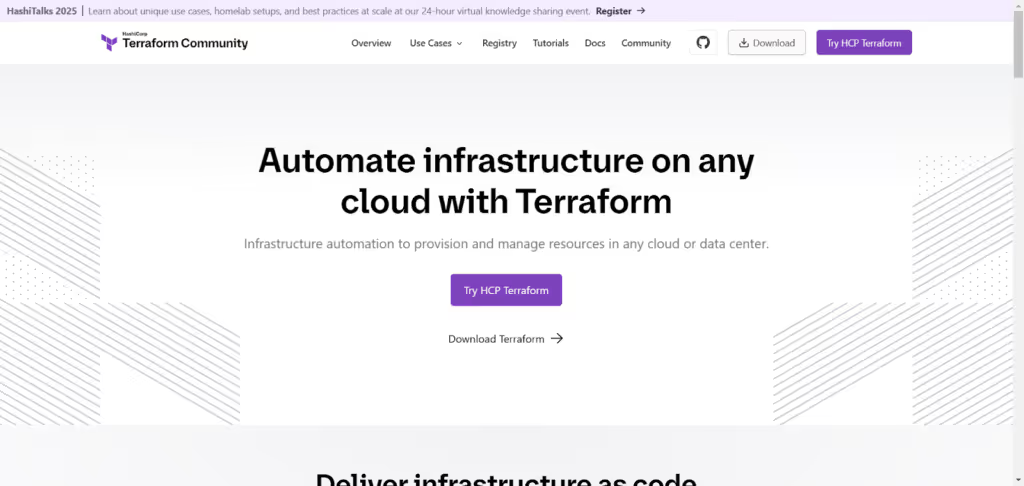
Terraform is an open-source tool that allows businesses to define infrastructure as code (IaC). It provides a declarative approach to provisioning, ensuring every environment remains consistent across deployments.

Why Enterprises Choose Terraform

Pulumi takes a modern approach to infrastructure automation. Unlike Terraform, which uses its own configuration language (HCL), Pulumi supports familiar programming languages like Python, TypeScript, and Go. This makes it a favorite for teams that prefer writing infra tools in their existing tech stack.
Why Businesses Choose Pulumi
Once the infrastructure is provisioned, the next step is configuration management. Consistently configuring servers, applications, and dependencies is key to maintaining security and performance.
Deploying infrastructure is just the first step. The real challenge begins with keeping it consistent, secure, and up to date. Configuration drift, manual errors, and inconsistent environments can slow teams down, cause outages, and create compliance risks. This is where configuration management comes in. It ensures every server, application, and system stays aligned with predefined settings.
Here are three powerful tools that automate configuration management and enforce policies seamlessly.
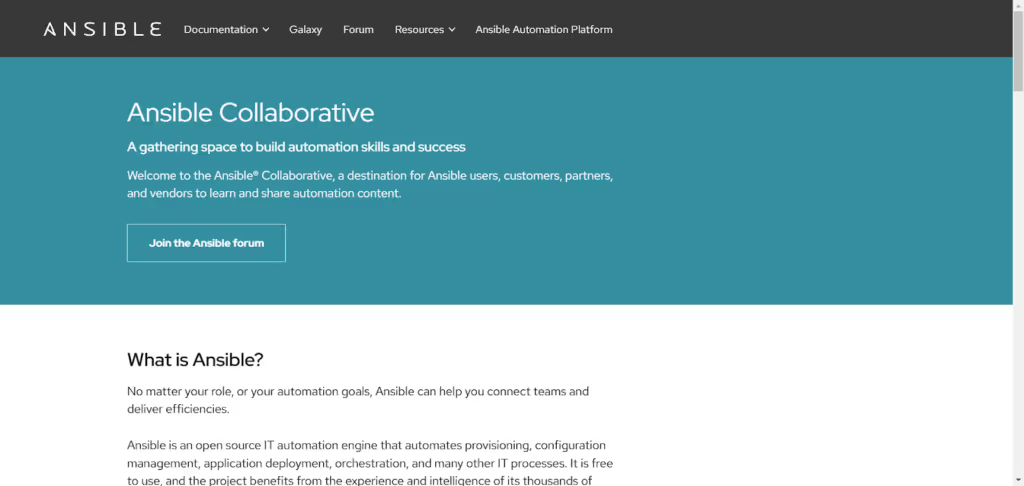
Ansible is a lightweight, agentless tool that automates configuration management using human-readable YAML files. Its popularity stems from its simplicity and quick deployment, making it a go-to choice for IT teams.
Key Features
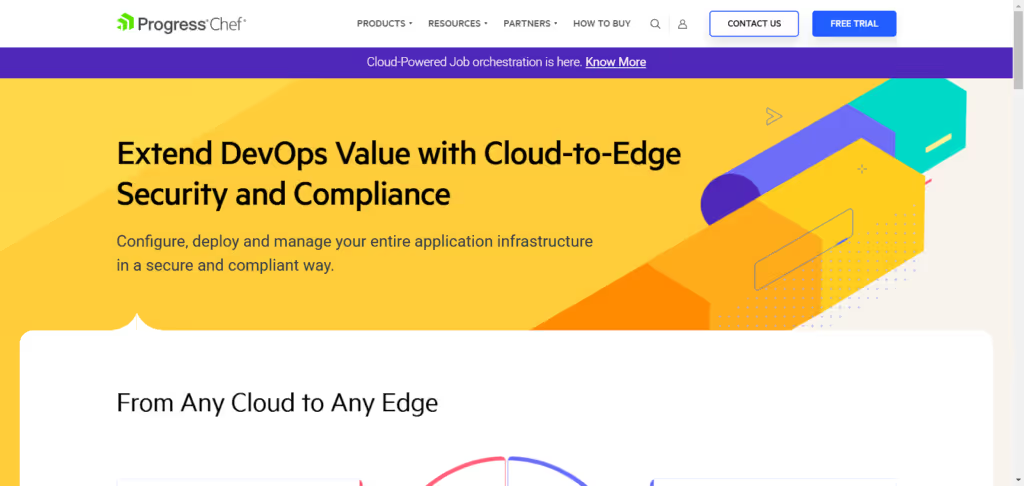
Chef offers a powerful, Ruby-based infrastructure as code (IaC) framework, giving enterprises deep control over configurations, compliance policies, and security enforcement. It excels in large-scale, hybrid, and multi-cloud environments that require highly customizable automation.
Why Businesses Choose Chef

Puppet follows a declarative model, making it ideal for businesses seeking automated, self-healing configurations. It also offers role-based access control (RBAC), enhancing security and compliance.
Key Features
With infrastructure securely configured, let’s explore the top CI/CD tools that help enterprises accelerate development cycles and maintain software reliability.
Continuous Integration and Delivery (CI/CD) tools are essential for modern software development. They streamline workflows, enhance collaboration, and ensure high-quality code delivery. Here’s an overview of three leading CI/CD tools:

Jenkins is one of the most widely used infra CI/CD automation tools. As an open-source automation server, it provides enterprises with scalability, flexibility, and deep integrations across the DevOps ecosystem.
Key Features of Jenkins
Understanding how Jenkins works enables organizations to utilize its capabilities effectively.
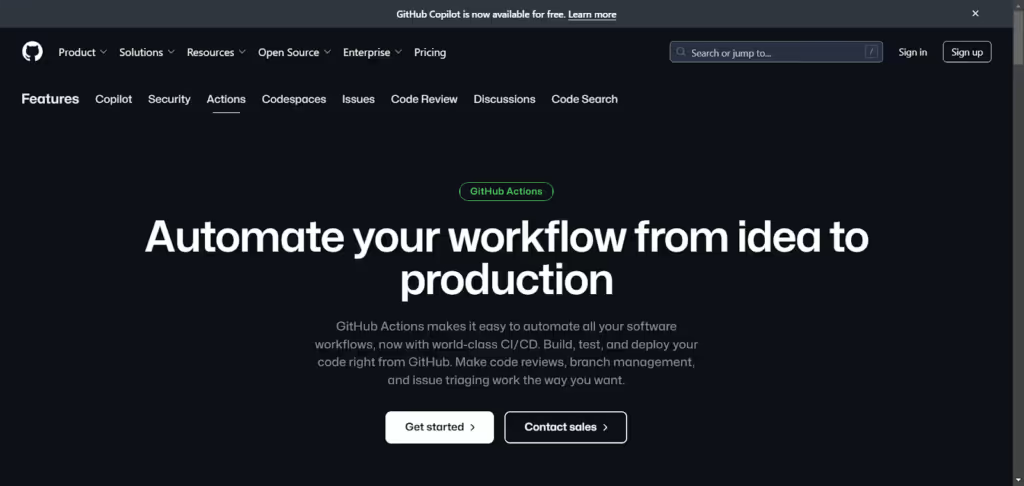
GitHub Actions brings native CI/CD automation to GitHub repositories, making it a seamless choice for development teams using GitHub for version control. Unlike Jenkins, it doesn’t require additional infrastructure, making it a low-maintenance, high-efficiency option for DevOps teams.
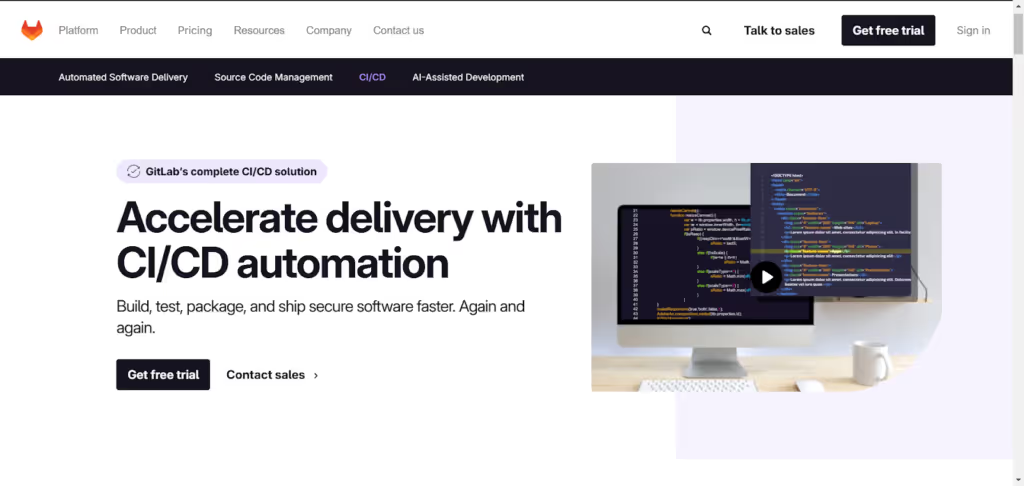
GitLab CI/CD is a fully integrated part of GitLab that offers end-to-end DevOps automation within a single platform. Unlike other solutions that require extensive plugins or configurations, GitLab CI/CD comes with native capabilities that reduce setup complexity.
Key Features:
Feature JenkinsGitHub ActionsGitLab CIIntegrationVendor-neutralNative integration with GitHubFully integrated platformCustomizationHighly customizable via pluginsPre-built actions availableYAML-based configurationMaintenanceRequires infrastructure managementLow maintenanceMinimal configuration overheadSecurity FeaturesBasic security featuresBuilt-in security controlsComprehensive security optionsScalabilityExcellent for large environmentsLimited by GitHub's infrastructureScalable within GitLab
With deployments automated, the focus shifts to scaling and managing applications efficiently.
Container orchestration platforms are essential for managing and automating the deployment of containerized applications.
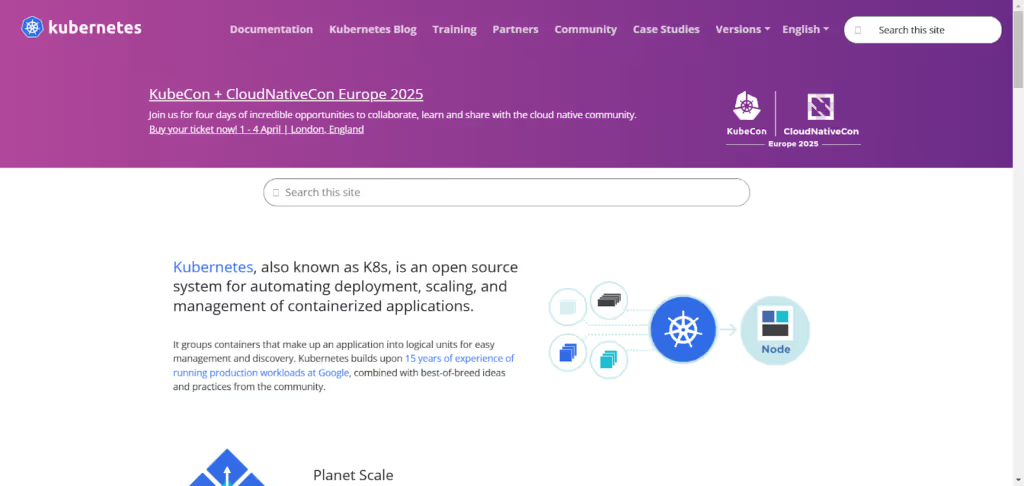
Kubernetes is the most widely adopted container orchestration platform known for its powerful features. It offers self-healing capabilities, which automatically replace failed containers, ensuring high availability. Kubernetes also excels at scaling applications up or down based on demand, making it suitable for dynamic workloads.

Docker Swarm is Docker’s native clustering solution, designed for simplicity and ease of use. It allows developers to quickly set up a cluster of Docker engines and manage them as a single virtual system. This makes it an excellent choice for smaller teams or projects that do not require the extensive features of Kubernetes.

Nomad is a lightweight workload orchestrator developed by HashiCorp. It supports various environments and can manage both containerized and non-containerized applications. Nomad is known for its simplicity and flexibility, making it suitable for organizations looking for an efficient orchestration tool without the overhead of more complex systems.
As organizations adopt these container orchestration platforms, the next step is ensuring robust monitoring and observability practices.
Infrastructure monitoring and observability are critical for maintaining the health and performance of modern applications.
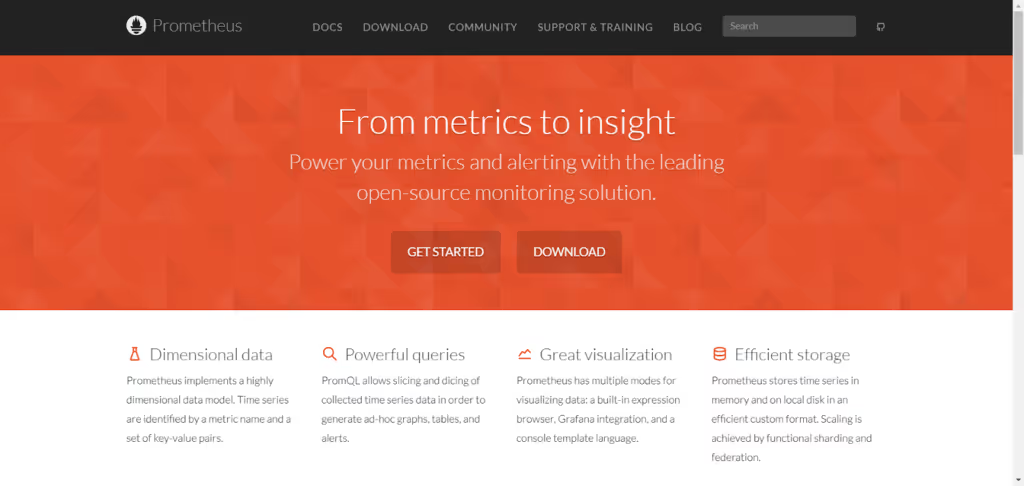
Prometheus is an open-source toolkit designed for monitoring and alerting. It excels at collecting metrics from various sources, particularly in cloud-native environments. With strong integration capabilities, especially with Kubernetes, Prometheus provides a robust solution for real-time monitoring.
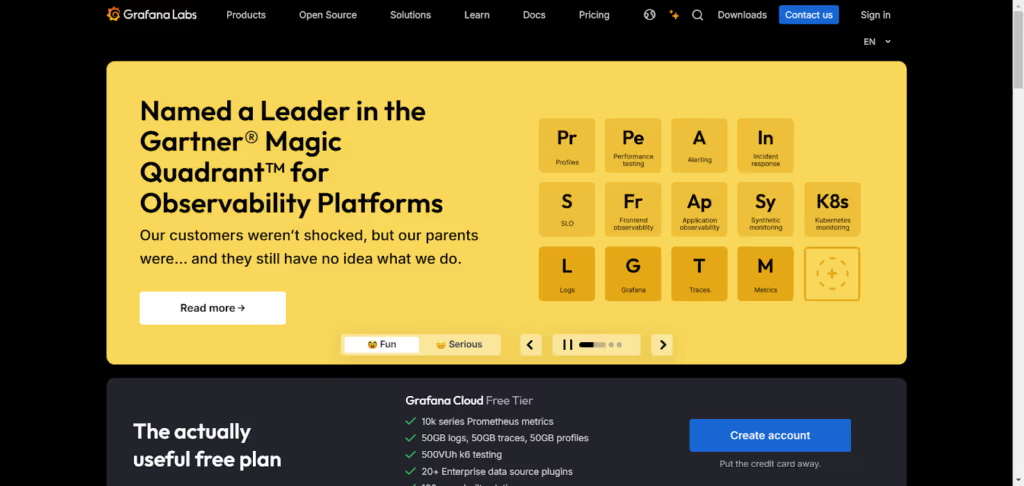
Grafana is a powerful visualization platform that supports multiple data sources, including Prometheus. It allows users to create interactive dashboards that display real-time data in an easily digestible format. With Grafana, organizations can visualize their metrics and gain valuable insights into system performance.
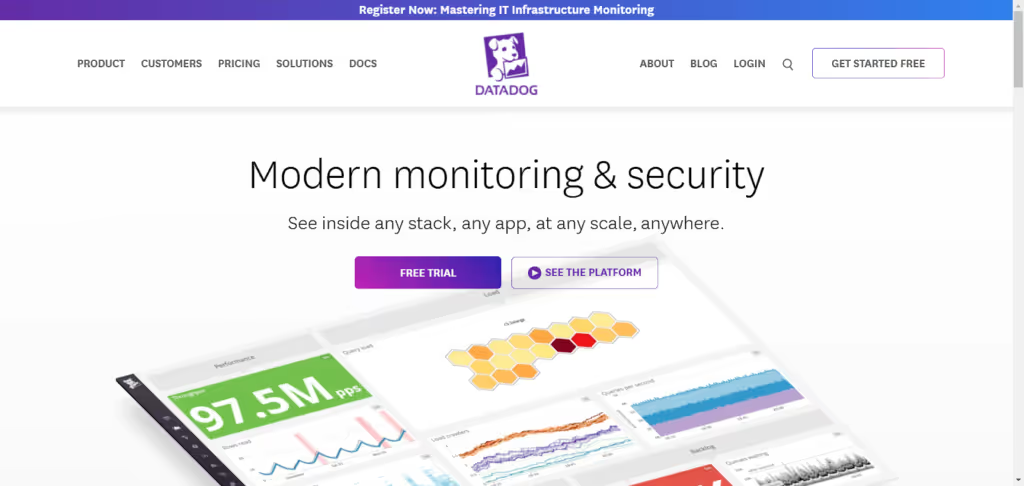
Datadog is a SaaS platform that offers extensive performance monitoring and AI-powered insights. It provides a unified view of applications, infrastructure, and logs, making it easier for teams to troubleshoot issues and optimize performance. Datadog’s ability to integrate with over 450 technologies allows for seamless monitoring across diverse environments.
Next, we’ll explore infra tools for configuration and secret management, helping businesses enforce secure access controls and protect sensitive information.
Poorly managed secrets expose businesses to data breaches, compliance failures, and unauthorized access. Storing API keys, encryption certificates, and database credentials in unencrypted files or code repositories is a major security risk. Below are two powerful infra tools that help enterprises secure credentials and manage configurations effectively.
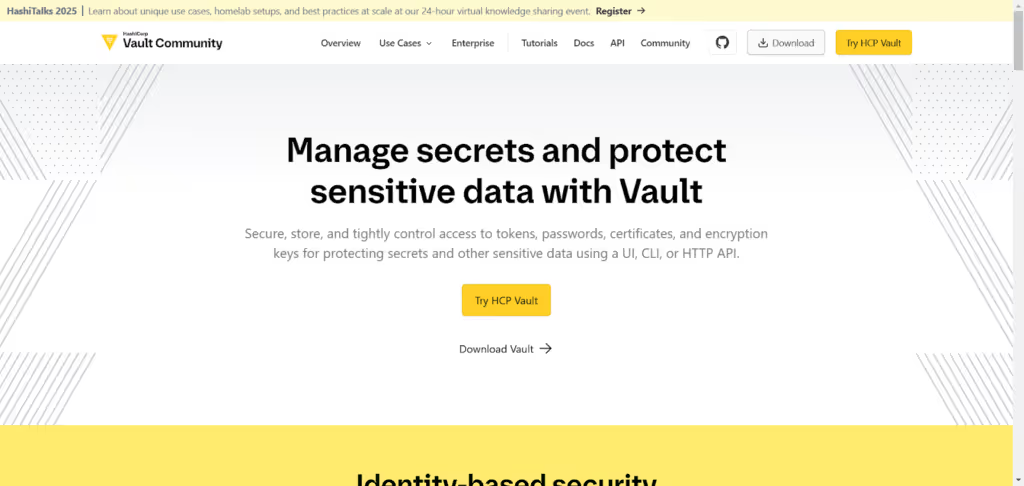
HashiCorp Vault is a sophisticated solution for securing, storing, and controlling access to sensitive data including API keys, passwords, and certificates. It is widely adopted in industries like financial services, healthcare, and large-scale cloud deployments due to its robust security features.
Why Enterprises Use HashiCorp Vault
Vault provides enterprise-grade security with advanced features designed for scalability and compliance.
Role-Based Access Controls for Stronger Security
Vault enforces fine-grained permissions, allowing only approved programs and users to access sensitive information. Organizations can limit the risk of data breaches and insider threats by restricting access based on role.
Temporary Credentials
Instead of relying on static, long-lived credentials, Vault generates temporary access keys that automatically expire after use. This prevents unauthorized access and significantly reduces the risk of leaked credentials.
Seamless Security Integration
Vault works with Kubernetes, enabling enterprises to apply uniform security policies across many cloud and hybrid environments. In spite of workloads shifting between cloud providers, this guarantees consistent secret management.
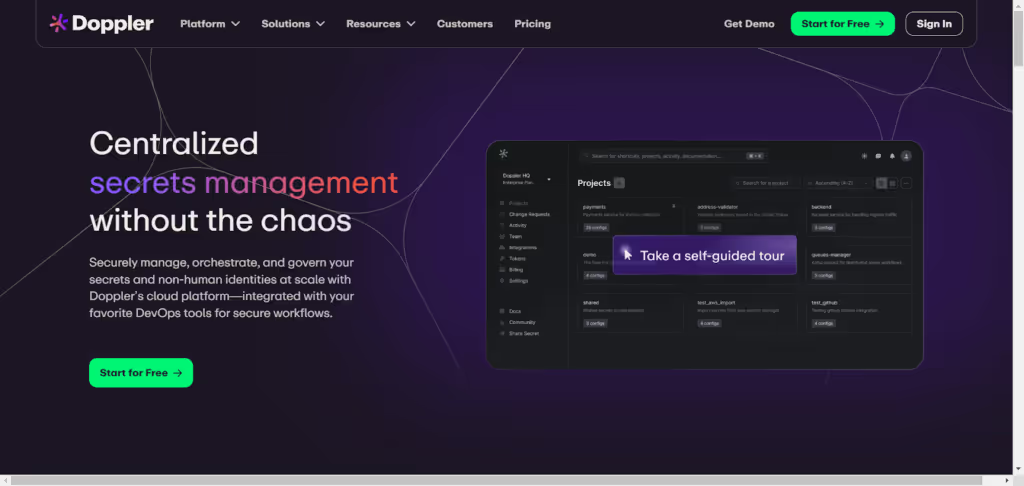
Doppler simplifies secret management by providing a centralized, encrypted vault for storing API keys, database credentials, and environment variables. This tool streamlines workflows while ensuring that sensitive information remains secure across various environments.
Key Features:
With secrets securely managed, the next step is strengthening overall security—let’s move forward to exploring infra tools for DevOps security that protect against unauthorized access,
Here’s a look at three leading security tools that help ensure safe and compliant software delivery.
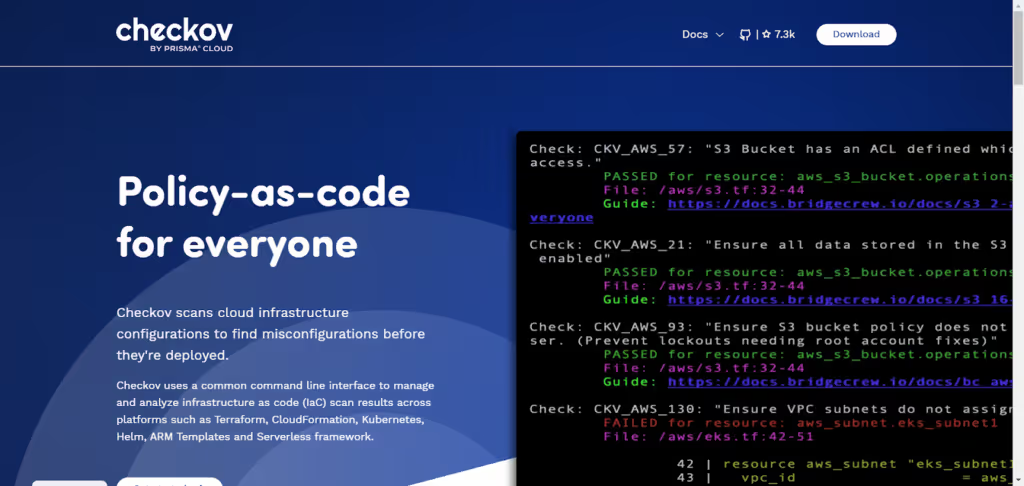
Checkov is an open-source tool designed for static analysis of Infrastructure as Code (IaC). It scans IaC configurations to identify security compliance issues before deployment. This proactive approach helps teams catch vulnerabilities early in the development process.
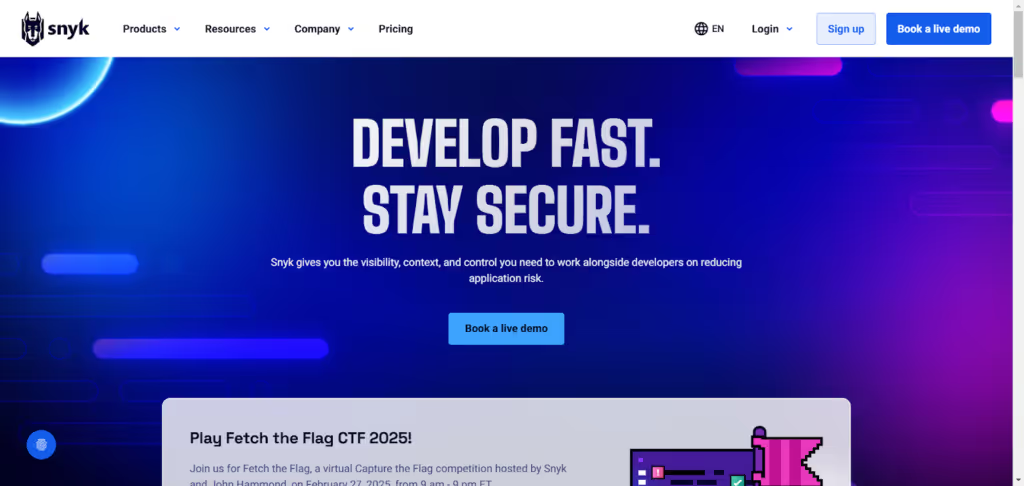
Snyk is a developer-focused security platform that helps organizations find and fix vulnerabilities across their entire software development lifecycle. It scans code, dependencies, containers, and infrastructure as code for known vulnerabilities.
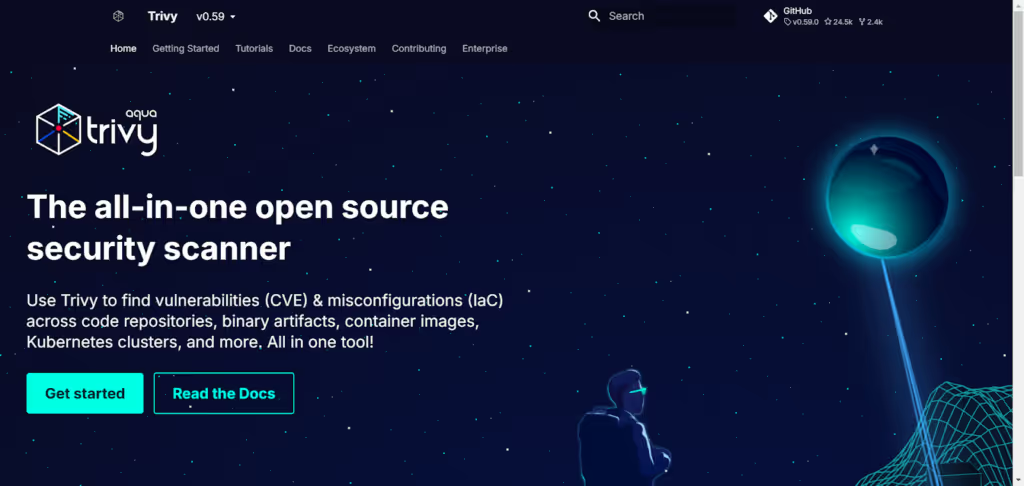
Trivy is an open-source vulnerability scanner designed specifically for containers and other artifacts. It is known for its speed and ease of use, making it an excellent choice for organizations looking to enhance container security quickly.
Choosing the right infra tools isn’t just a technical decision—it’s a competitive advantage. The right automation stack streamlines operations, accelerates deployments, and strengthens security, ensuring businesses stay agile and resilient. But tools alone don’t drive transformation—strategy, execution, and expertise do.
To maximize the potential of infrastructure automation, organizations need a structured DevOps strategy, seamless tool integration, and cross-team collaboration. Without a clear roadmap, even the most advanced infra tools can become underutilized investments, leading to inefficiencies and security gaps.
This is where WaferWire becomes a key partner. With deep expertise in infrastructure automation, DevOps consulting, and enterprise cloud solutions, we help businesses implement tools and optimize them for long-term success. Whether you need CI/CD integration, container orchestration, or security automation, our tailored approach ensures your organization achieves maximum efficiency and resilience.
It’s time to move beyond outdated workflows and into a fully automated, high-performance future. Partner with us to unlock real efficiency, stronger security, and smarter DevOps execution.

